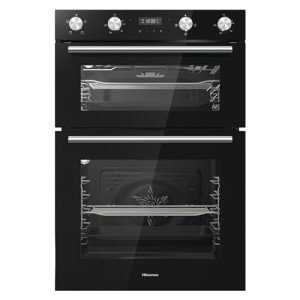The History Of Oven Built In

The Rise of Built-In Ovens: A Seamless Approach to Modern Cooking
In contemporary kitchen areas, where design looks mix effortlessly with functionality, one device stands out as a real game changer: the built-in oven. As house owners and chefs alike continue to look for ingenious options that enhance their cooking experience, built-in ovens have ended up being significantly popular. This post explores the advantages, factors to consider, and patterns surrounding built-in ovens, highlighting why they are a necessary feature in contemporary cooking spaces.
What is a Built-In Oven?
A built-in oven is a kitchen area appliance developed to be integrated into the cabinetry of a kitchen instead of standing alone. Unlike traditional freestanding ovens, which can be moved and placed anywhere, built-in ovens been available in various styles and sizes to fit specifically within designated areas. Available in single or double configurations, these ovens offer a structured appearance that matches modern cooking area styles.
Benefits of Built-In Ovens
1. Space-Saving Design
Among the most appealing advantages of built-in ovens is their space-saving design. By integrating the oven into kitchen cabinetry, you can maximize valuable counter and flooring area. This is particularly useful in smaller sized kitchens, where optimizing room is important. Built-in ovens can be set up at eye level, making them more accessible and minimizing the need to flex down.
2. Visual Appeal
Built-in ovens add to a streamlined and cohesive kitchen design. Readily available in numerous surfaces-- such as stainless steel, black, white, and custom kitchen cabinetry-- they can blend perfectly into the total decoration. This aesthetic appeal improves the cooking area's visual consistency and elevates the area, creating a modern and sophisticated environment.
3. Boosted Functionality
Many built-in ovens come geared up with advanced cooking technologies, such as convection cooking, steam ovens, and clever functions. These enhancements enable for versatile cooking options, making it easier to accomplish professional-level results at home. Smart built-in ovens can even connect to Wi-Fi, allowing users to control the oven from another location, receive notifications, and gain access to a variety of cooking programs and recipes.
4. Improved Ventilation
Because built-in ovens can be integrated with cooking area hoods and ventilation systems, they can help keep much better air quality and minimize cooking smells. This is specifically significant for those who love to prepare with fragrant spices and components, as a reliable ventilation system can keep the kitchen area comfortable and welcoming.
5. Customization Options
Built-in ovens use a broad range of customization alternatives to suit private cooking designs and requirements. From professional-grade home appliances with multiple cooking modes to compact styles for smaller sized kitchens, house owners can pick the oven that fits their specific requirements. Numerous makers also provide personalized front panels, enabling you to match the oven's look to your cabinets for a truly unified appearance.

Factors to consider When Choosing a Built-In Oven
While built-in ovens have many benefits, there are very important factors to consider to bear in mind before purchasing:
1. Rate
Built-in ovens normally feature a greater cost tag than their freestanding equivalents due to their design and installation requirements. It's crucial to consider both the expense of the oven and any extra expenses connected to cabinetry modifications or installation.
2. Setup Requirements
Installing a built-in oven often requires professional support, specifically if you require to customize existing cabinets. Guarantee that you think about any costs related to installation, consisting of labor and possible cabinets adjustments.
3. Size and Dimensions
Before buying a built-in oven, measure the designated area properly to guarantee a proper fit. Built-in ovens come in numerous sizes and setups, so choosing one that lines up with your requirements and kitchen style is crucial.
4. integrated electric oven of life and Usage
Consider your cooking habits and needs when choosing a built-in oven. If you frequently host large events, a double oven might be more helpful. On the other hand, if you have a compact kitchen, a single-wall oven may be enough.
Trends in Built-In Ovens
The cooking area home appliance market is continually progressing, and built-in ovens are not exempt from emerging trends. Some current patterns consist of:
Smart Technology Integration: With the increase of smart home technology, built-in ovens now typically include connection alternatives. This permits users to monitor cooking progress and adjust settings through mobile apps.
Energy Efficiency: As sustainability ends up being a top priority, many producers are purchasing energy-efficient built-in ovens that decrease energy consumption while keeping performance.
Multi-functional Designs: Built-in ovens now use functions such as air frying, slow cooking, and steaming, offering adaptability that fulfills a vast array of cooking methods.
Conclusion
Built-in ovens certainly represent a perfect blend of design, function, and benefit in today's kitchen areas. As more property owners choose for this modern-day service, the focus shifts to producing a cooking area that is as visually pleasing as it is useful. Whether you are building a new home or renovating your kitchen area, considering a built-in oven could raise your culinary experience and transform your kitchen into an elegant and practical haven. With an array of choices offered and ongoing developments in technology, built-in ovens stay a standout option for both novice cooks and culinary lovers alike.
